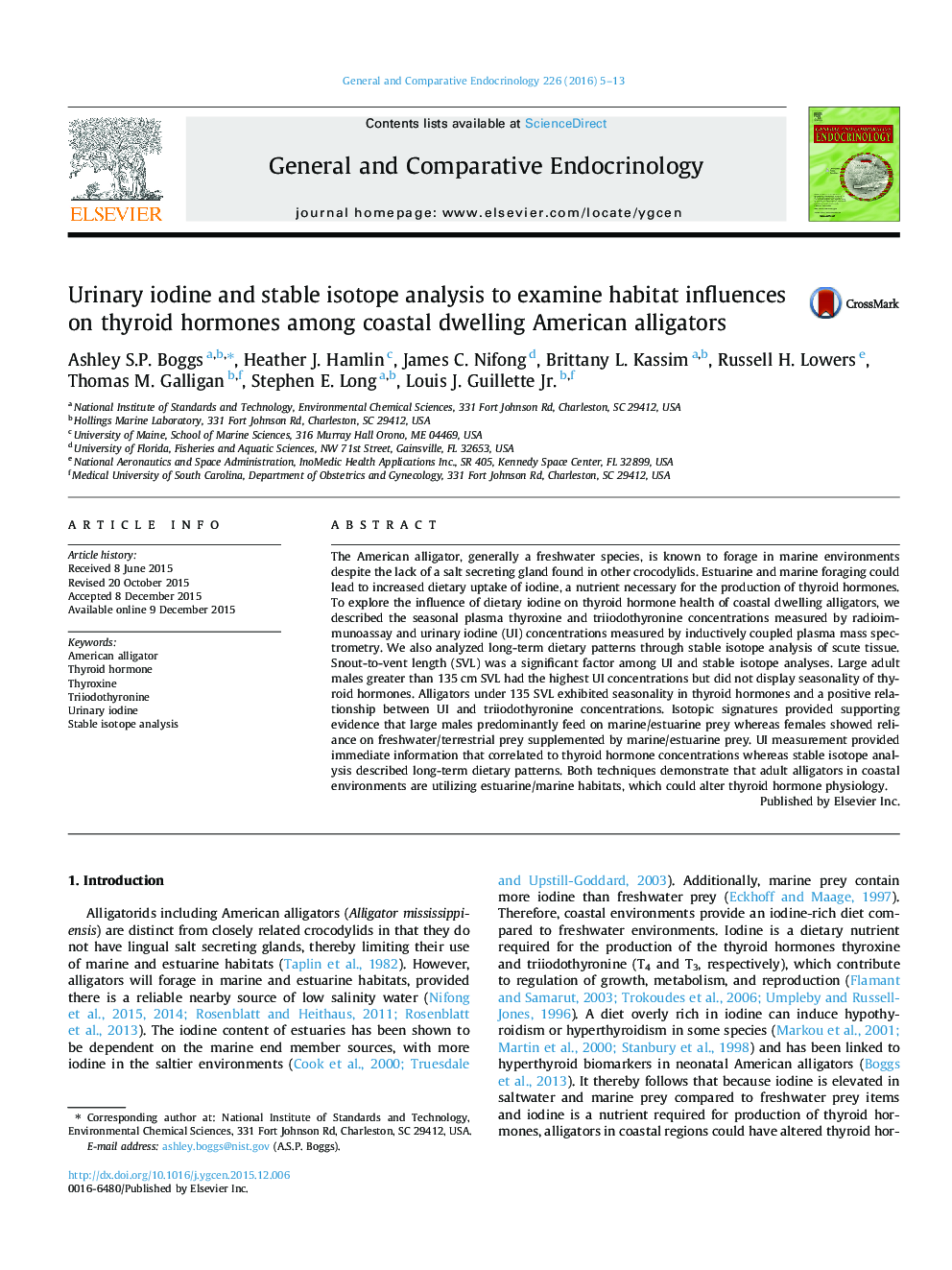| کد مقاله | کد نشریه | سال انتشار | مقاله انگلیسی | نسخه تمام متن |
|---|---|---|---|---|
| 2799820 | 1568880 | 2016 | 9 صفحه PDF | دانلود رایگان |
• American alligators that feed in marine systems have increased urinary iodine.
• Isotopic signatures showed large males primarily ate marine/estuarine prey.
• Large adult males had elevated urinary iodine not correlated to thyroid hormones.
• Small alligators had correlative increases in triiodothyronine with urinary iodine.
• Niche shifts in feeding can alter iodine intake and thyroid hormones.
The American alligator, generally a freshwater species, is known to forage in marine environments despite the lack of a salt secreting gland found in other crocodylids. Estuarine and marine foraging could lead to increased dietary uptake of iodine, a nutrient necessary for the production of thyroid hormones. To explore the influence of dietary iodine on thyroid hormone health of coastal dwelling alligators, we described the seasonal plasma thyroxine and triiodothyronine concentrations measured by radioimmunoassay and urinary iodine (UI) concentrations measured by inductively coupled plasma mass spectrometry. We also analyzed long-term dietary patterns through stable isotope analysis of scute tissue. Snout-to-vent length (SVL) was a significant factor among UI and stable isotope analyses. Large adult males greater than 135 cm SVL had the highest UI concentrations but did not display seasonality of thyroid hormones. Alligators under 135 SVL exhibited seasonality in thyroid hormones and a positive relationship between UI and triiodothyronine concentrations. Isotopic signatures provided supporting evidence that large males predominantly feed on marine/estuarine prey whereas females showed reliance on freshwater/terrestrial prey supplemented by marine/estuarine prey. UI measurement provided immediate information that correlated to thyroid hormone concentrations whereas stable isotope analysis described long-term dietary patterns. Both techniques demonstrate that adult alligators in coastal environments are utilizing estuarine/marine habitats, which could alter thyroid hormone physiology.
Figure optionsDownload as PowerPoint slide
Journal: General and Comparative Endocrinology - Volume 226, 15 January 2016, Pages 5–13
